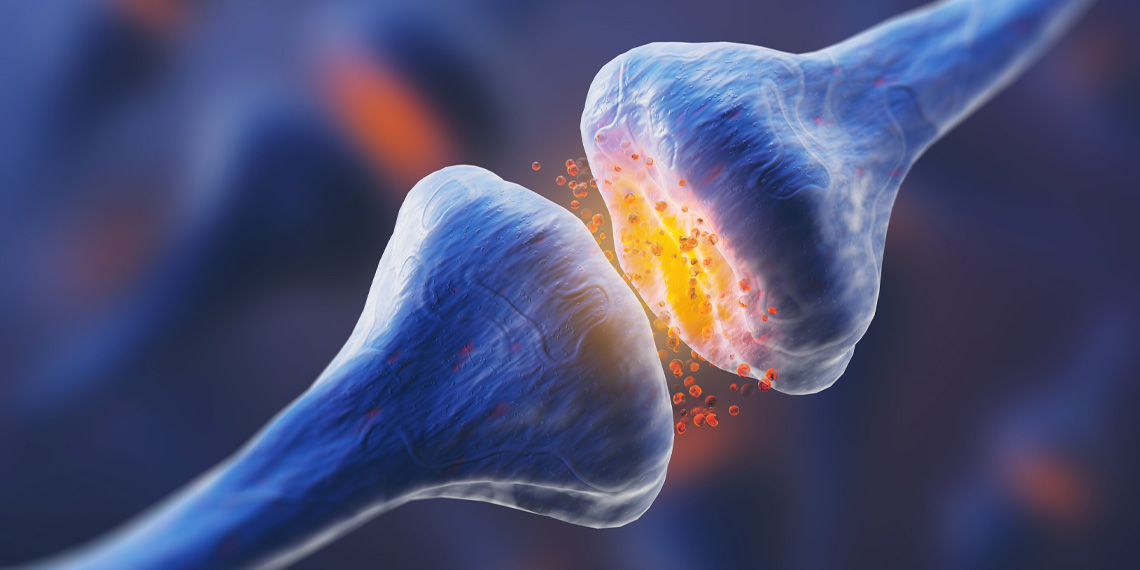A recent study published in The Journal of Neuroscience sheds new light on how serotonin, a neurotransmitter often linked to mood regulation, influences reward anticipation and value encoding in the brain. Researchers found that serotonin is released not only when rewards are consumed but also in response to cues that predict rewards. This release is finely tuned to the subjective value of the reward, showing a higher response to more desirable rewards. These findings help clarify the role of serotonin in reward-related brain processes, a subject previously dominated by research on dopamine.
For years, most research on the brain’s reward system has focused on dopamine, a neurotransmitter strongly associated with pleasure, motivation, and goal-directed behavior. While dopamine is known to play a crucial role in how we experience rewards, researchers have increasingly turned their attention to serotonin, which is also involved in various behaviors related to reward. However, the specific role of serotonin in the brain’s reward circuits has remained unclear. Studies on serotonin have produced conflicting results, with some showing that its depletion reduces reward-related responses while others indicate that increasing serotonin does not enhance reward enjoyment.
Given these inconsistent findings, the researchers wanted to explore how serotonin functions within the striatum, a brain region heavily involved in decision-making and reward. By using a newly developed serotonin biosensor, they sought to better understand the timing and components of serotonin release in response to different reward conditions.
“While serotonin is known to have an important role in many different behaviors, its role in reward is still very unclear,” said study author Katherine M. Nautiyal, an assistant professor of psychological and brain sciences at Dartmouth College. “Based on the tools that were previously available, we weren’t able to understand how serotonin encodes reward, which scientists have been studying for decades for dopamine. Characterizing both the timing and circumstances of serotonin release in the brain is a step towards better understanding serotonin’s role in modulating reward-related behaviors.”
To investigate how serotonin is involved in reward processing, the research team conducted their study on mice. They used a biosensor called GRAB-5-HT, a tool that allows for real-time measurement of serotonin levels in specific regions of the brain. The focus was on the dorsomedial striatum, a part of the brain that plays a key role in action selection and learning about the consequences of actions.
The study involved a series of experiments designed to observe how serotonin levels changed during different reward-related behaviors. First, the mice were trained to consume different concentrations of evaporated milk, with their licking behavior and serotonin levels monitored during these sessions. The researchers also used a Pavlovian conditioning paradigm, where a sound would signal the delivery of a reward, to examine how serotonin responded to predictive cues.
The mice were housed in controlled environments and underwent surgery to implant optic fibers for serotonin measurement. After the mice recovered from surgery, they were placed in test chambers where they could access various concentrations of milk or water. The researchers recorded the serotonin levels during these reward trials, paying particular attention to how the neurotransmitter was released during different phases, such as when the reward was anticipated, cued, or consumed.
The researchers observed that serotonin levels in the striatum increased before the consumption of a reward, suggesting that serotonin plays a key role in reward anticipation. About two seconds before the mice began licking the reward spout, serotonin levels started to rise. This pattern was consistent whether the reward was a high-value option, like rich evaporated milk, or a lower-value option, like water.
Interestingly, serotonin release was also triggered by cues that predicted the reward. When the mice heard a sound that signaled a reward would soon be delivered, their serotonin levels increased in anticipation of the reward, showing that serotonin helps the brain encode not just the actual receipt of a reward but the expectation of it. The magnitude of serotonin release was higher when the expected reward was of greater value. For example, richer concentrations of milk triggered stronger serotonin responses than water.
“Serotonin has many different functions throughout the brain and the field is still working to define those functions,” Nautiyal told PsyPost. “We focused on one brain area that is centrally involved in reward processing and decision making, the dorsal striatum, during simple reward-related behaviors. We found that serotonin levels track the value of rewards. Specifically, our results show that serotonin is released in anticipation of a reward and also to a cue that predicts a reward, and that it is graded by extrinsic and subjective value.”
The study also showed that internal states, such as hunger or thirst, influenced serotonin levels. When the mice were water-deprived, increasing their thirst, the serotonin release in response to water consumption was slightly higher, suggesting that serotonin tracks subjective changes in the value of a reward.
“We did not expect serotonin release to be as faithfully representative of reward value,” Nautiyal said. “We had anticipated serotonin to function in a more binary fashion, acting as a general signal of a positive outcome—for example, increasing when an animal consumed a reward, regardless of the reward’s identity, or being modulated only if the animal was specifically primed to want or not want the reward.”
While this study provides important insights into serotonin’s role in reward anticipation and value encoding, it also has limitations. For one, the research focused on only one brain region—the dorsomedial striatum—and during relatively simple reward tasks. The researchers acknowledge that serotonin’s role in more complex, goal-directed behaviors or in other brain areas might be different.
Additionally, while the findings indicate that serotonin is involved in encoding both reward anticipation and value, the precise mechanisms behind these effects remain unclear. For example, it is still uncertain how serotonin interacts with dopamine, which is also involved in reward prediction and consumption, or how serotonin might influence learning about rewards over time.
The researchers are currently expanding their work to explore serotonin’s function in other brain regions and during more complicated behaviors. Future studies may look at how serotonin influences aversive events (such as when a reward is expected but not delivered) or compare serotonin’s role across different brain areas involved in motivation and reward.
“We are hoping to understand serotonin’s broader function in brain-wide reward processing and behavioral control,” Nautiyal said. “We’d like to understand if this serotonin release is important for learning about a reward or motivation towards a reward. We’d also like to characterize serotonin release during aversive, rather than rewarding, events and perform a comparative analysis of serotonin release across brain regions during reward and motivated behavior.”
The study, “Striatal serotonin release signals reward value,” was authored by Mitchell G. Spring and Katherine M. Nautiyal.




